What Is a Value Proposition?
A value proposition is a statement that details why customers should buy your product or service.
In a sentence or two, it conveys:
- Your brand’s key features and benefits
- How you differ from competitors
- How you’ll solve customers’ problems
It’s like saying “Here’s what our company does and why we’re perfect for you.”
Here’s a value proposition for Semrush:
Get measurable results from online marketing. Do SEO, content marketing, competitor research, PPC and social media marketing from just one platform.
We explain what our target customers gain from using our platform. And how we stand out from similar options (all-in-one platform).
That’s communicating value.
You’ll see value propositions on websites and in ads. But companies also use them to create consistent messaging internally. And for investor pitches.
Value propositions differ from mission statements (longer statements thatdefine a company's goals) and slogans (catchy phrases that capture the spirit of the brand).
Use the Value Proposition writing tool in our AI Writing Assistant to capture your brand’s value in seconds.
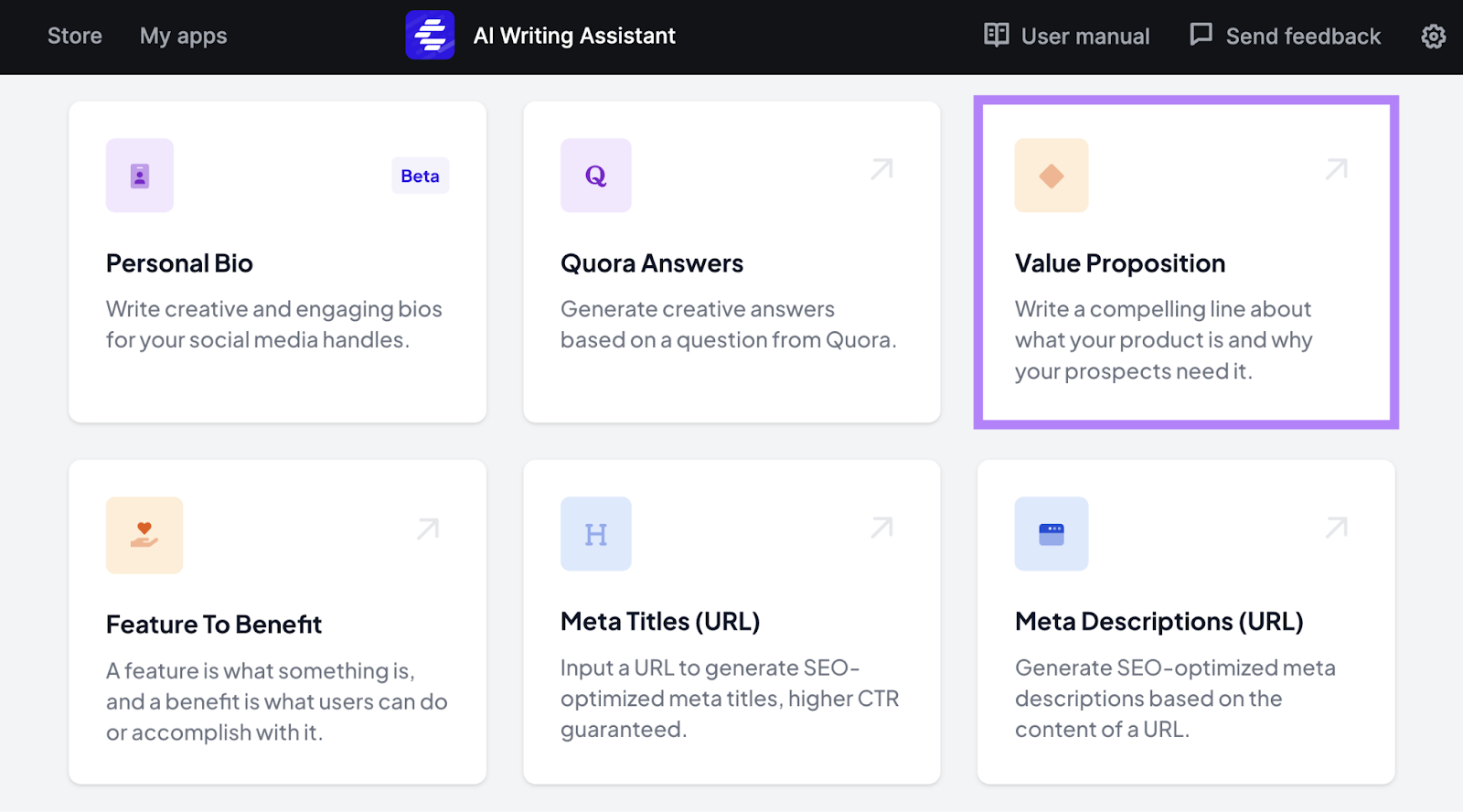
Why Is It Important to Have a Value Proposition?
If people don’t know what your product or service can do for them, they won’t buy it.
Your brand could be the best in the market. But if you don’t communicate its value, it may as well not exist.
A unique value proposition directly connects your offering to your target customers’ needs.So your message genuinely resonates.
It helps you:
- Attract the right kind of customers who are ready to purchase
- Connect with your audience to build long-term loyalty
- Guide your marketing, sales, and product development
In short, your value proposition is the foundation of your entire marketing plan.
Elements of a Value Proposition
Value propositions typically contain three components:
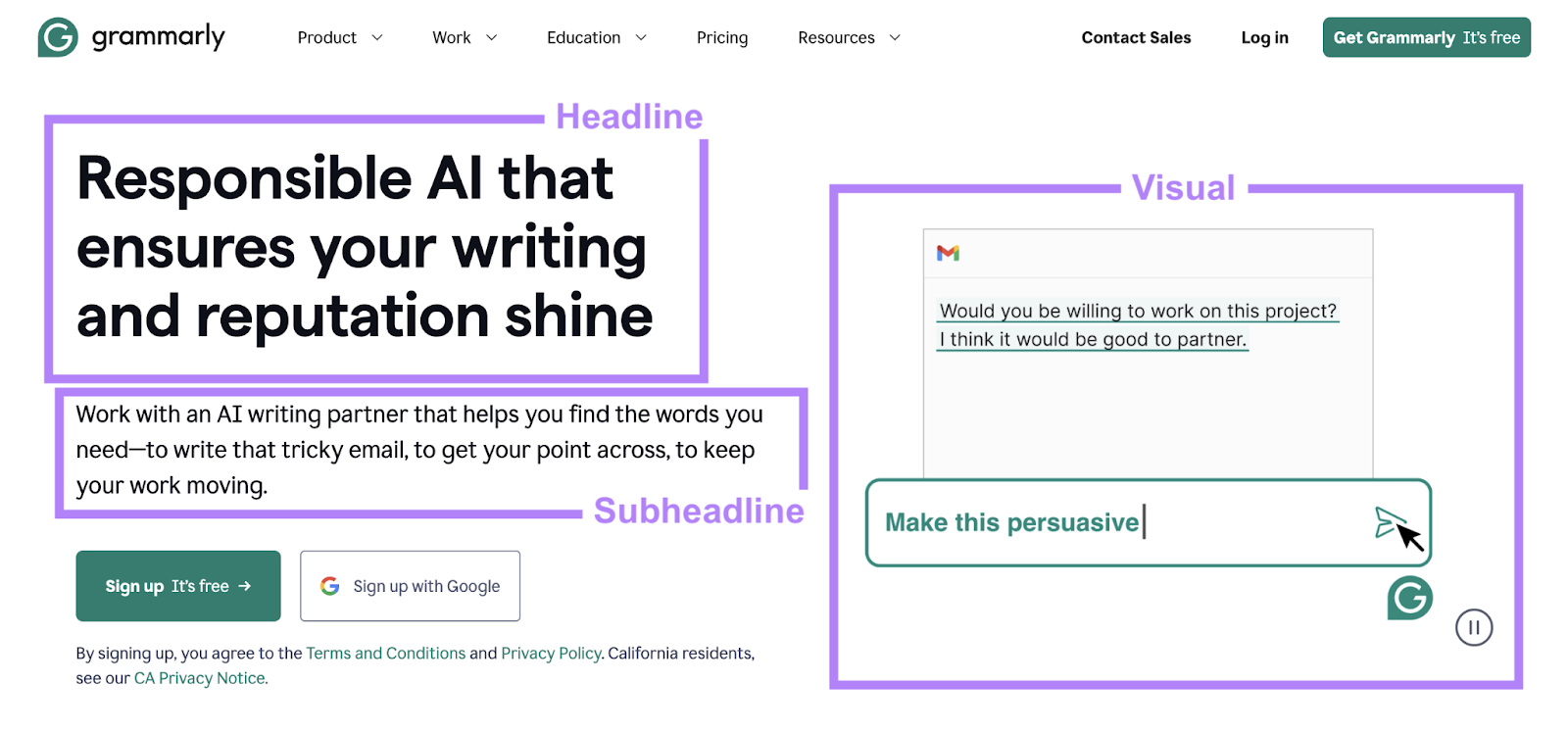
- Headline: Your core message that conveys the value you offer. It should be attention-grabbing but accurate.
- Subheadline: Additional context that clarifies your offering, provides secondary details, or an additional message
- Visual: An image, graphic, or video that reinforces the value proposition and makes it more engaging
Value propositions come in different forms depending on how they’re being used. What you see on a landing page may differ from a pitch deck.
But the above elements remain the foundation of crafting a good one.
How to Create a Strong Value Proposition
To write a compelling value proposition, you must thoroughly know both your brand and audience.
With that information, you can craft a strong value proposition in seconds with our AI Writing Assistant.
If you’re still learning about your audience and identifying your unique selling points, continue reading.
1. Identify Your Target Audience
Your target audience is your ideal client.
For example, an ecommerce store is trying to sell computer backpacks.
Its ideal client could be young professionals who prioritize tech-friendly features like padded laptop compartments and device charging ports.
Or older clients, who place more value on ergonomic touches like padded shoulder straps.
Or even higher-income individuals who may want brand prestige and cutting-edge materials. Lower-income individuals are likely looking for durability and versatility.
By analyzing your potential clients’ needs, pain points, and preferences, you can create a message that truly speaks to them. And persuades them to purchase.
Conduct crucial audience research by analyzing your competitors’ audiences. Semrush’s One2Target tool makes this step easy and efficient.
To start, select your location and enter up to five of your competitors’ domains. Click “Analyze.”
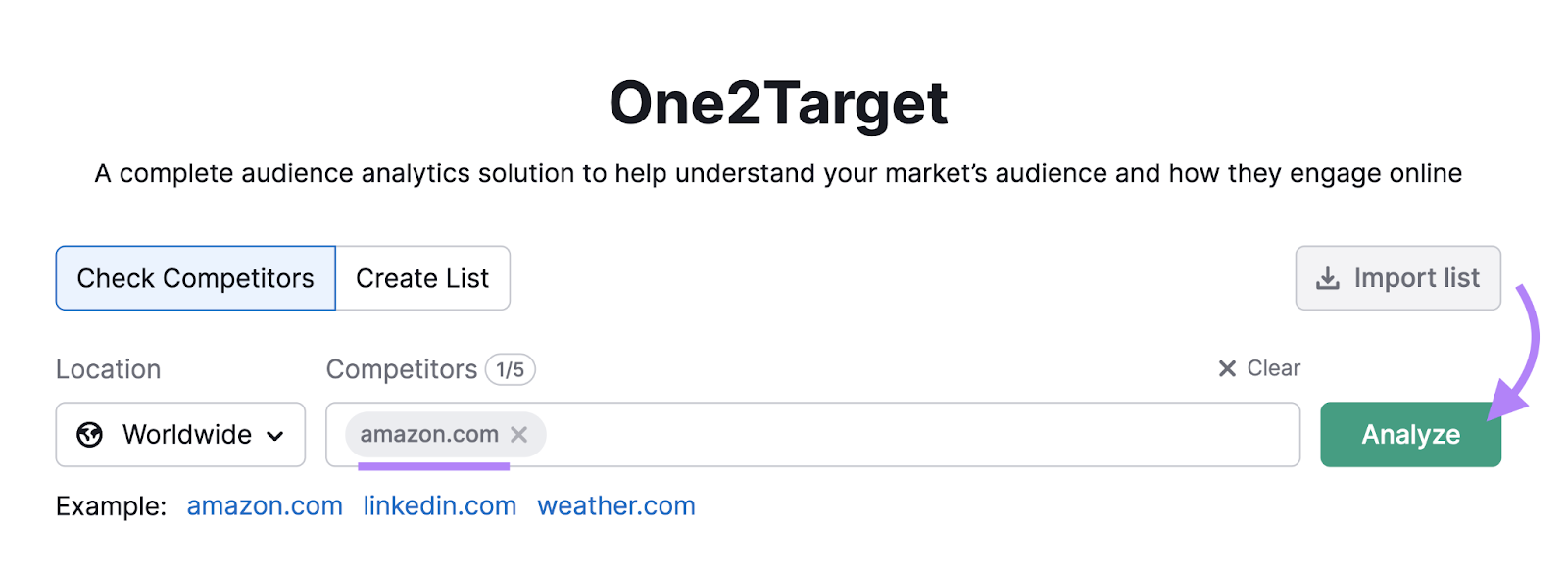
Under Demographics, you’ll see a competitor audience breakdown by age, sex, and location. Plus, the number of visitors to their site.

Socioeconomics details household size, income level, and employment status.

For deeper insights, go to Behavior to see audience interests and preferred social media channels. Or Audience Overlap to see other websites they visit.
Use these insights to understand who your customers are and what they want in a product or service like yours.
2. Analyze What You Offer
Start by listing all the key benefits of your offering. Then, include the things your company does well for its customers.
For example:
- What features do you offer that are unique in the market?
- What innovative technology have you leveraged?
- How easy is it for customers to buy?
- What makes customers feel most satisfied with their purchase?
- What positive experiences have you created for your customers?
- How does your pricing compare to competitors?
- What ethical or sustainability practices do you follow?
- How have you built a community around your brand?
You may be surprised to learn what customers truly appreciate about you.
Head to Semrush's Brand Monitoring tool to review customer feedback and see how you’re perceived in the market.
This tool allows you to track brand mentions across the web and social media platforms.
Click “Get Started.” Then, select what you’d like to monitor. For example, to see how popular your brand is and what people think about it, select “Brand.”
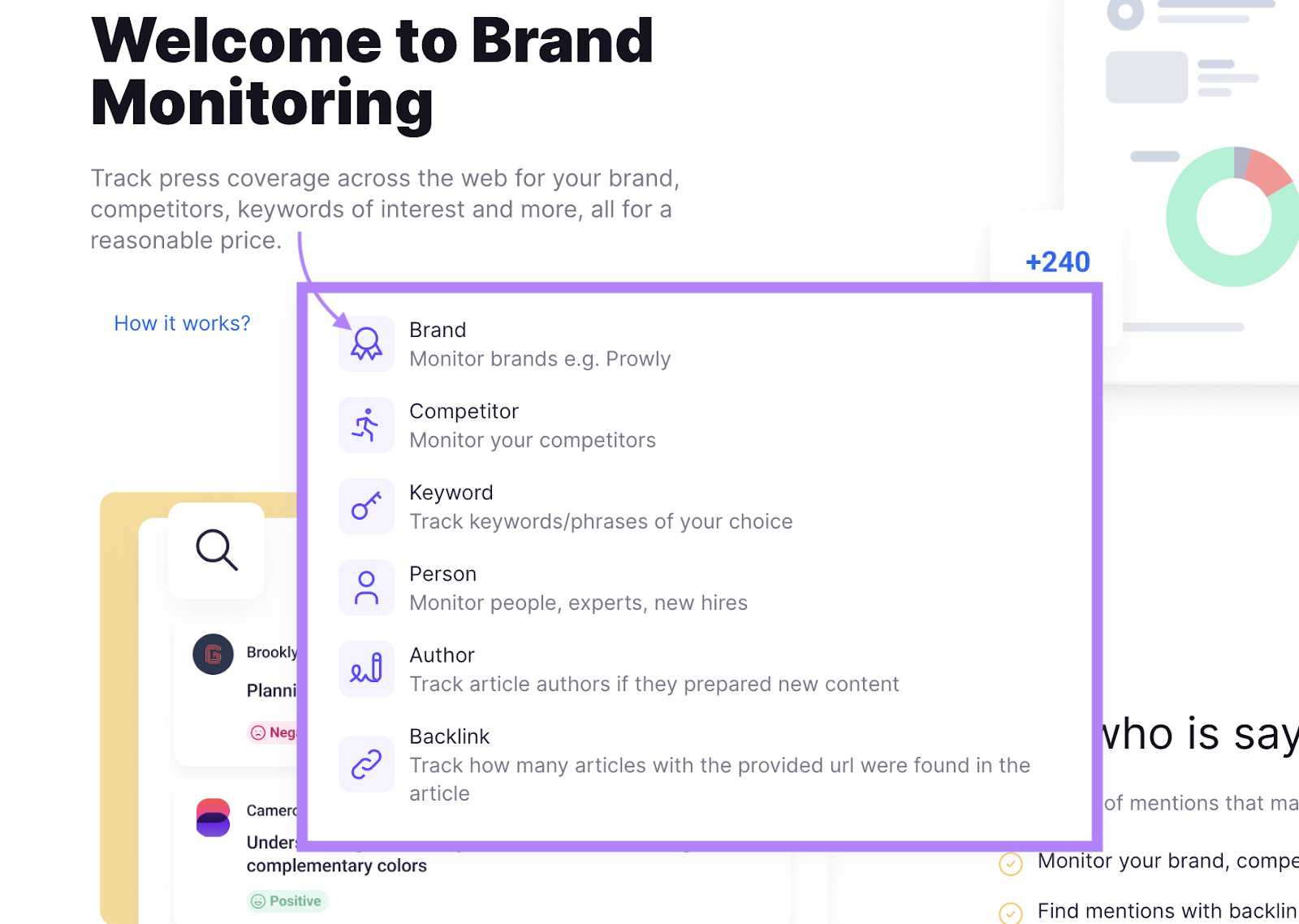
Enter your brand name and whether you want to receive email notifications for new mentions. Additional drop-downs offer advanced search filters. When you’re done, click “Create query.”
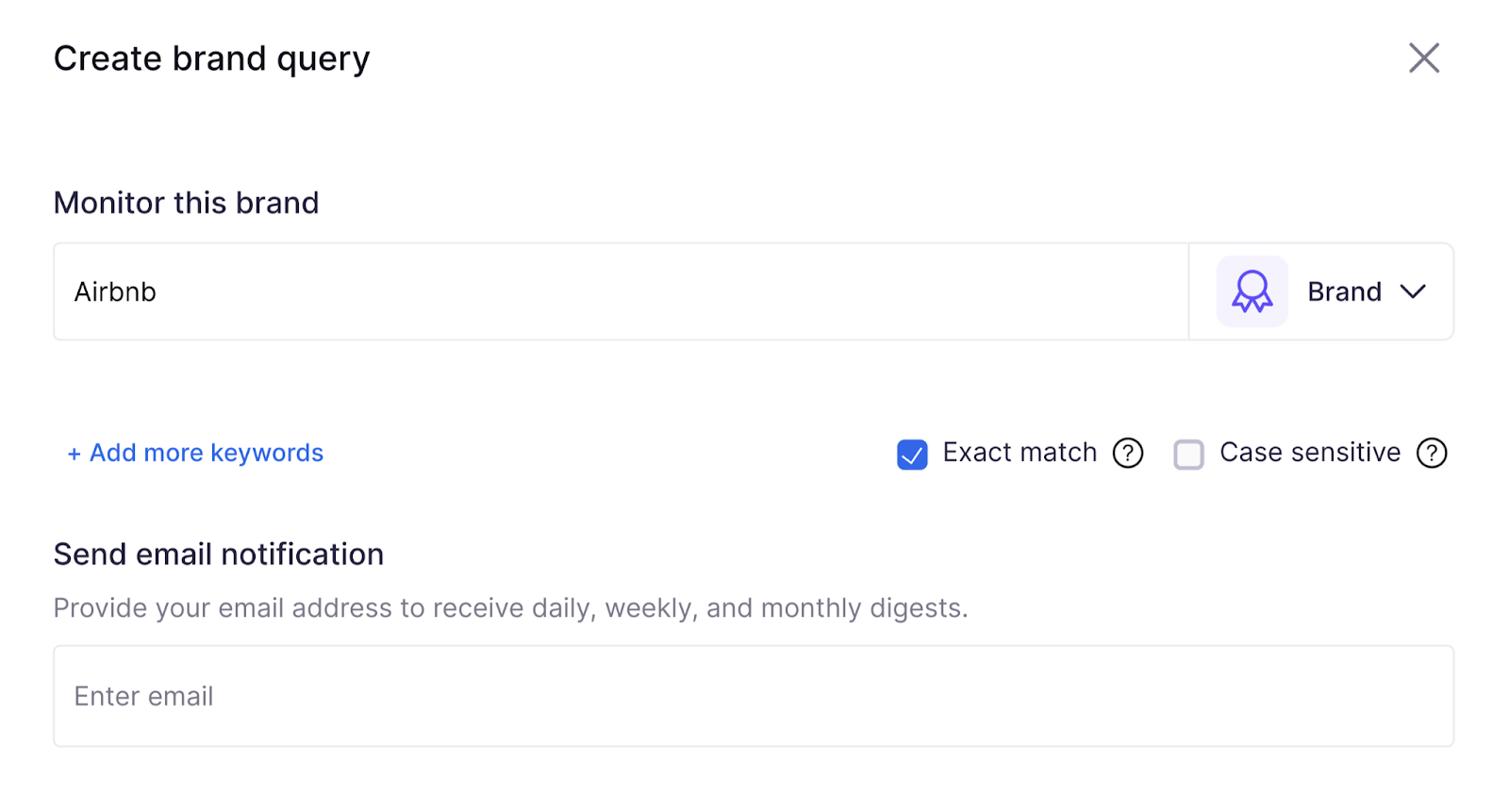
Shortly, you’ll see a report overview. Under “Analytics,” review total mentions and where they’re from. Below that, sentiment toward your brand.
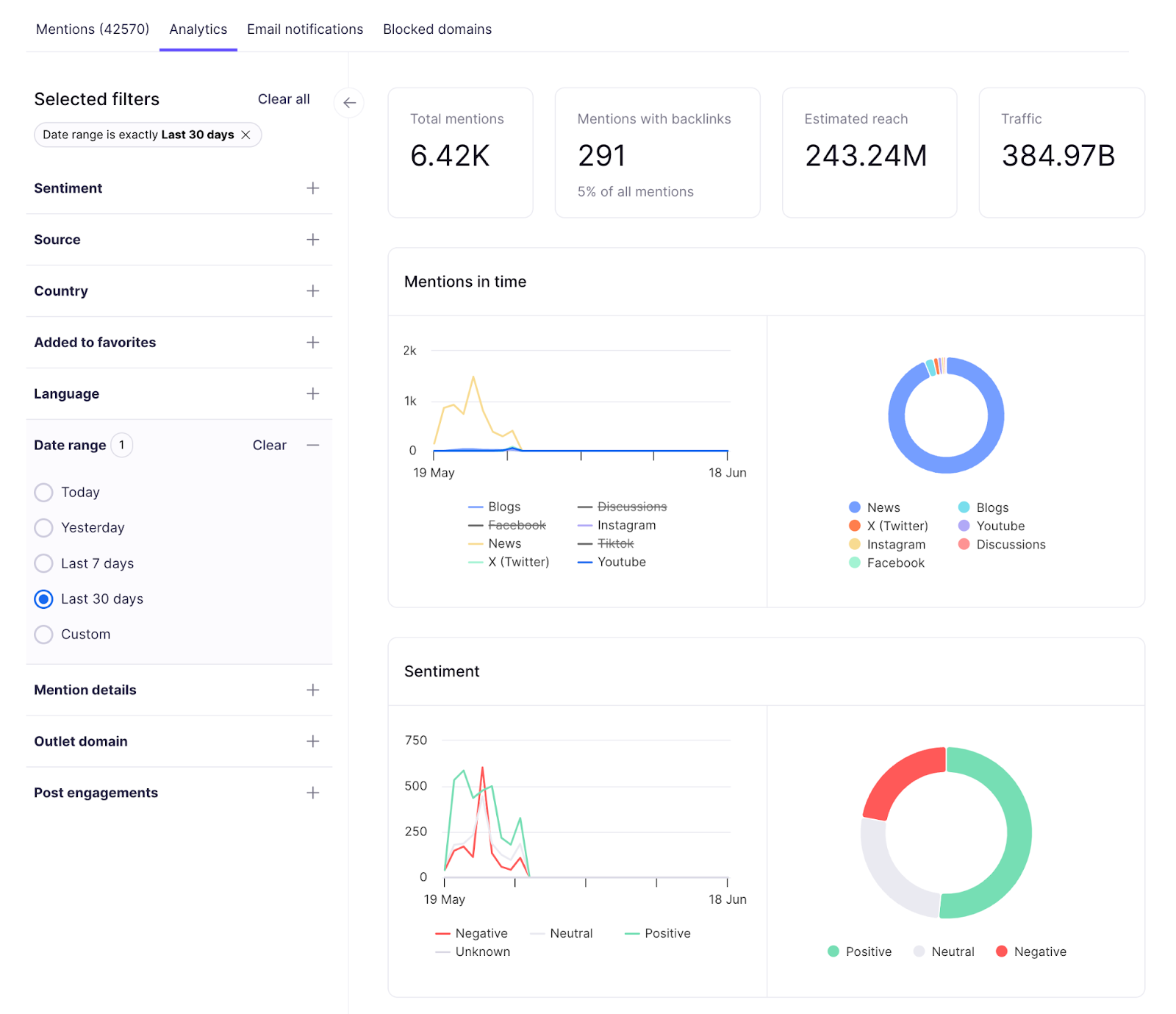
For deeper insights, toggle to “Mentions.”You’ll see a list of times you’ve come up that can be sorted by language, location, sentiment, or keywords.
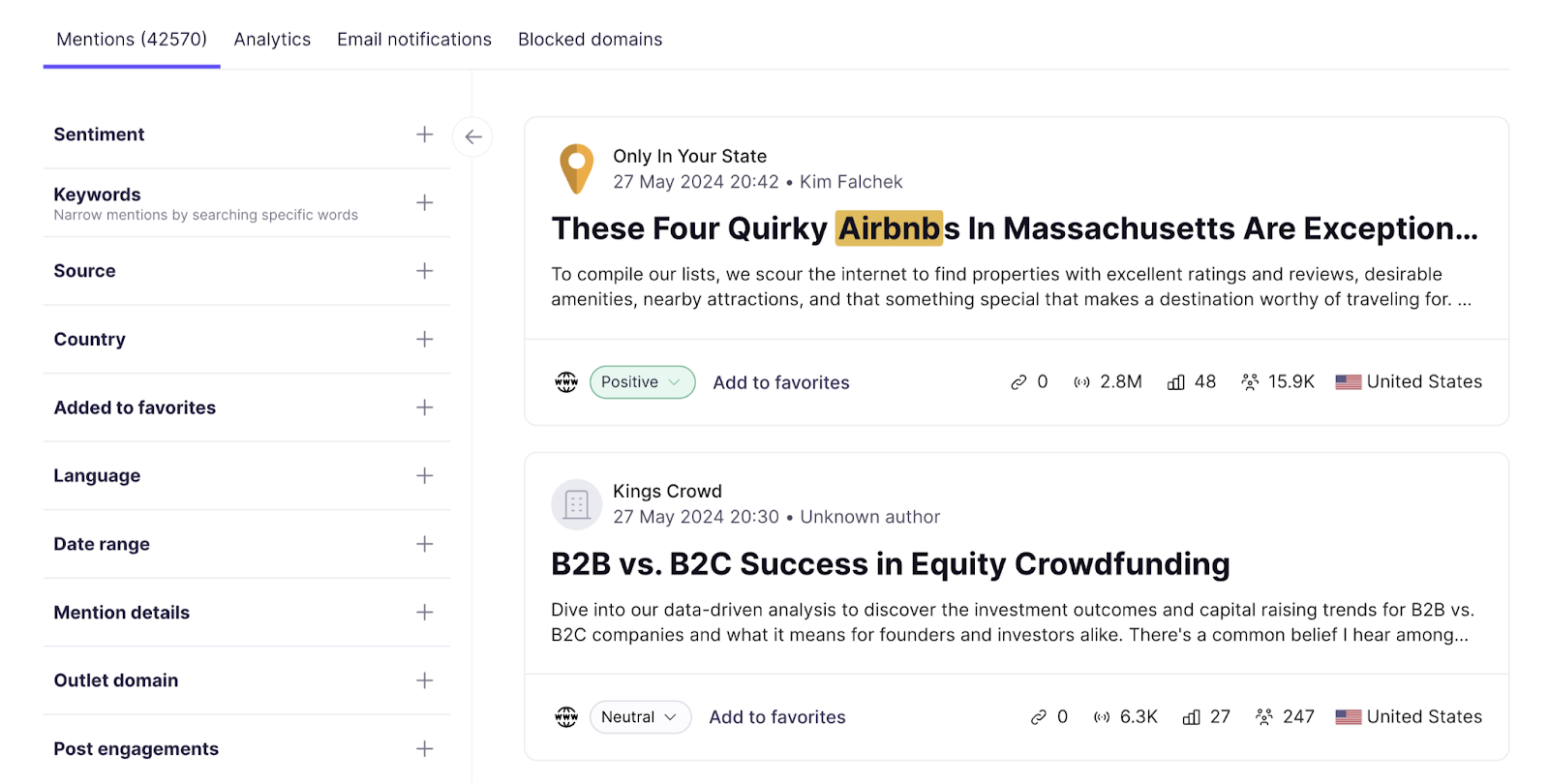
Leverage these insights by looking for mentions with positive sentiment. And use them to answer the above questions.
3. Connect Benefits to Customers’ Needs with a Value Proposition Template
You identified your customers’ main problems. And found what makes your brand special.
Now, put them together.
Using our commuter backpack example. Perhaps you discovered that your audience is primarily young urban professionals who appreciate tech-friendly features.
And you saw that existing customers spoke highly of the backpack’s layout. Such as how they can access the laptop from either the top or the side of the bag.
This is a key part of your value.
But how do you make the connection in a way that speaks to people?
Try using one of the below templates to get started.
Geoffrey Moore’s Value Positioning Statement
First introduced in his book, Crossing the Chasm, Geoffrey Moore’s Value Positioning Statement has been used by numerous Fortune 500 Companies.
For [target customer] who [problem they need solved], [your product or service] is a [product category] that [explain the main benefit]
Using our example brand:
For city dwellers who need a stylish way to carry their tech essentials, ABCPack is a cutting-edge daily carry system with a multi-access laptop compartment and integrated RFID-blocking pockets.
Steve Blank’s XYZ Statement
For something shorter, try entrepreneur Steve Blank’s formula. Tech startups often use a format similar to this.
It’s simply:
We help X do Y by doing Z.
For example:
We help urban commuters stay organized and connected by providing tech-friendly backpacks with advanced storage and security features.
Value Proposition Canvas
The Value Proposition Canvas is a detailed framework that’s often taught in business programs.
Using the chart below, map your customer needs and pain points by connecting them to your product or services.
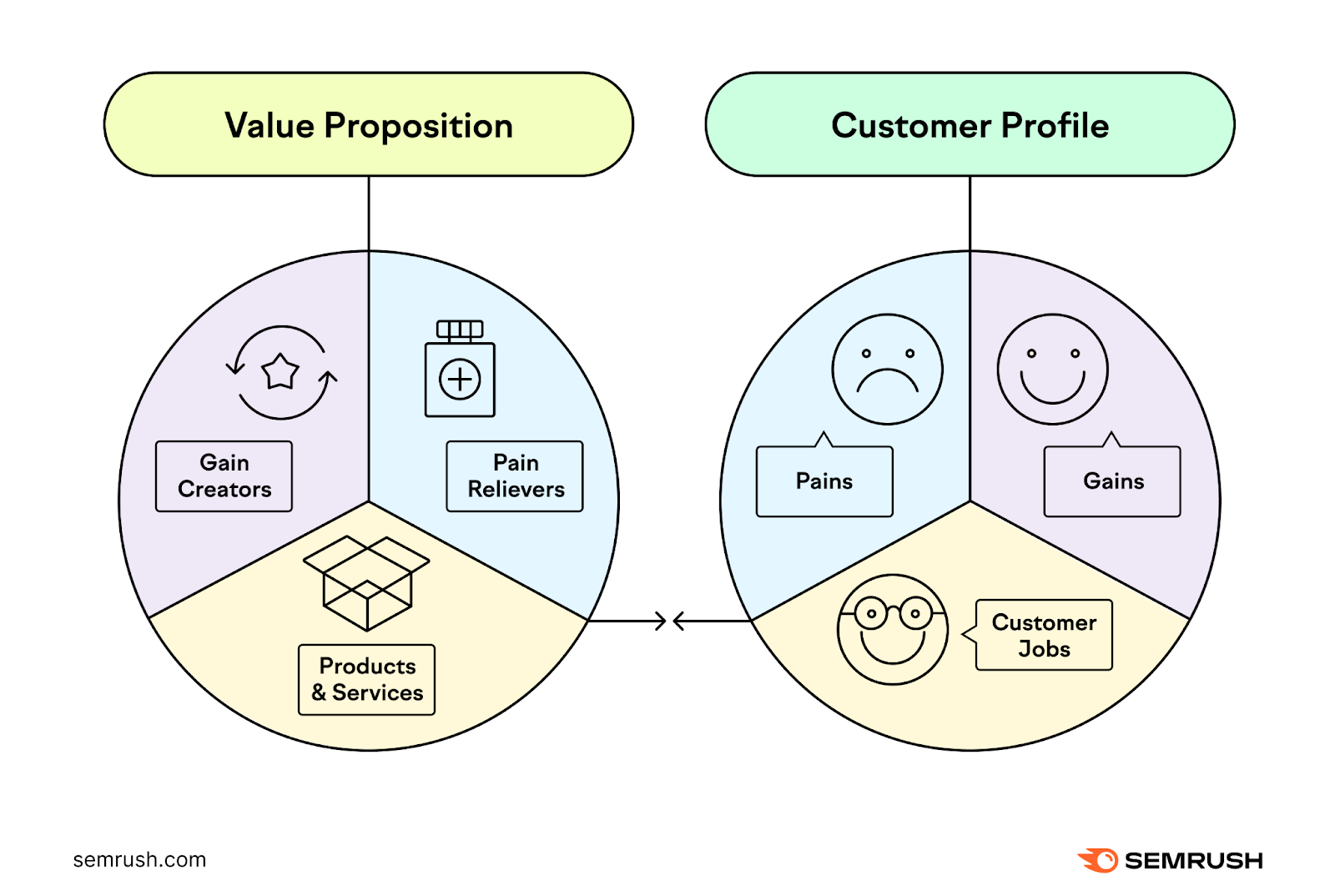
The canvas is divided into two main sections: the customer profile and the value map.
Start by completing the Customer profile:
- Jobs: Tasks customers want to complete, feelings they want to experience, or emotional responses from others they want to elicit
- Pains: Obstacles, anxieties, and frustrations they experience completing the job
- Gains: Positive outcomes from completing the job, such as results or aspirations
Then fill in the Value Map:
- Products and services: Products or services that you offer
- Pain relievers: How they reduce or fix the pains customers have
- Gain creators: Ways they produce the outcomes that customers want
Match the solutions on the Value Map to the problems on the Customer Profile. Now you have the basis for your value proposition statement.
Like this:
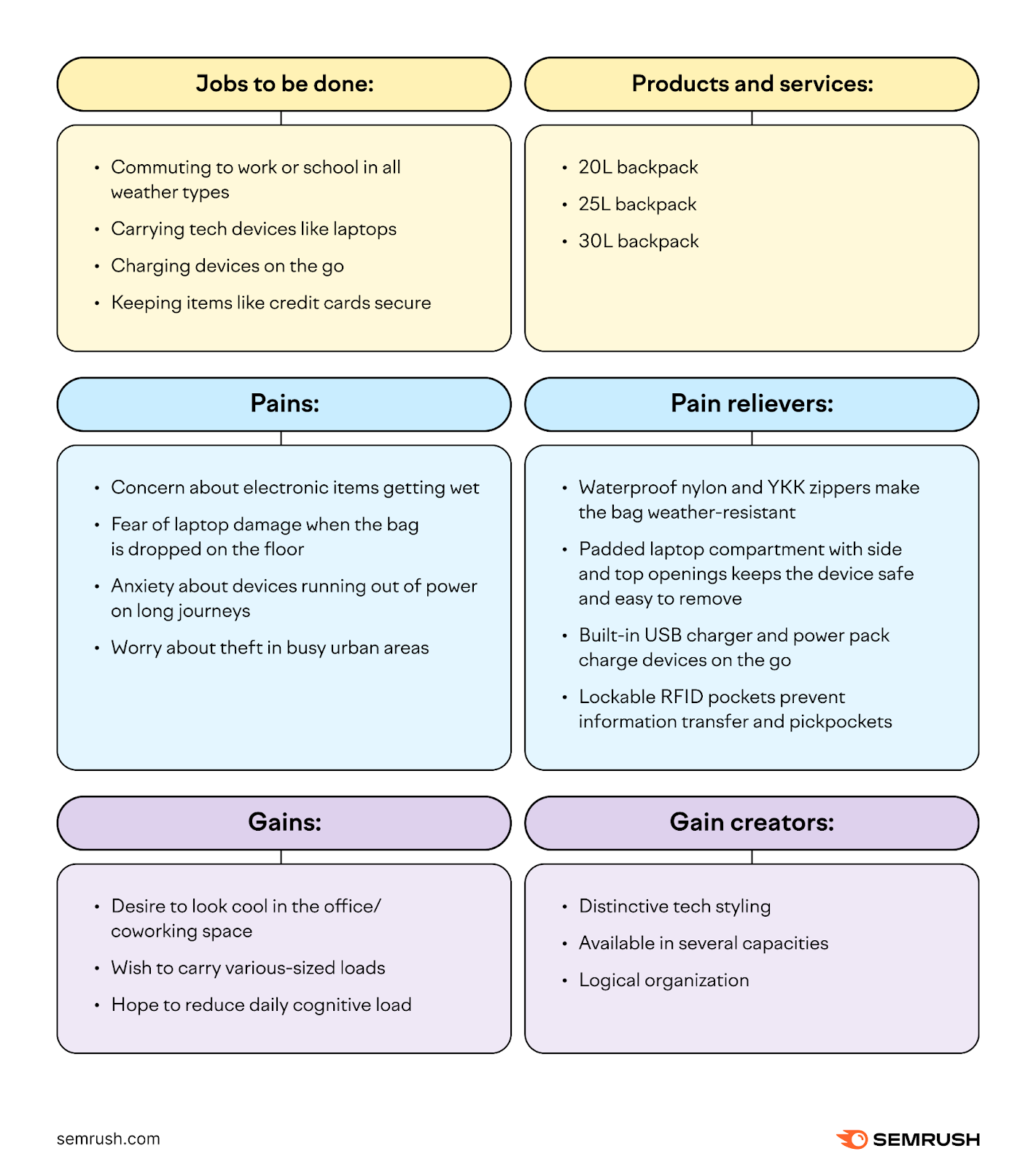
4. Write Your Value Proposition
Tone, word choice, and syntax are all equally important for value proposition writing.
Here are some tips for nailing it:
- Make sure your value proposition can be read and understood in five seconds
- Use simple language
- Use active voice
- Use words like “you” and your” for personalization
- Use a consistent tone
- Avoid hype and superlatives (“best ever!”)
- Avoid jargon
- Avoid clichés
Get a head start using Semrush's AI Writing Assistant, which uses the latest AI technology to generate a value proposition in seconds based on your inputs.
Go to All Tools and type in “value proposition.” (There are 70-plus tools to choose from.)
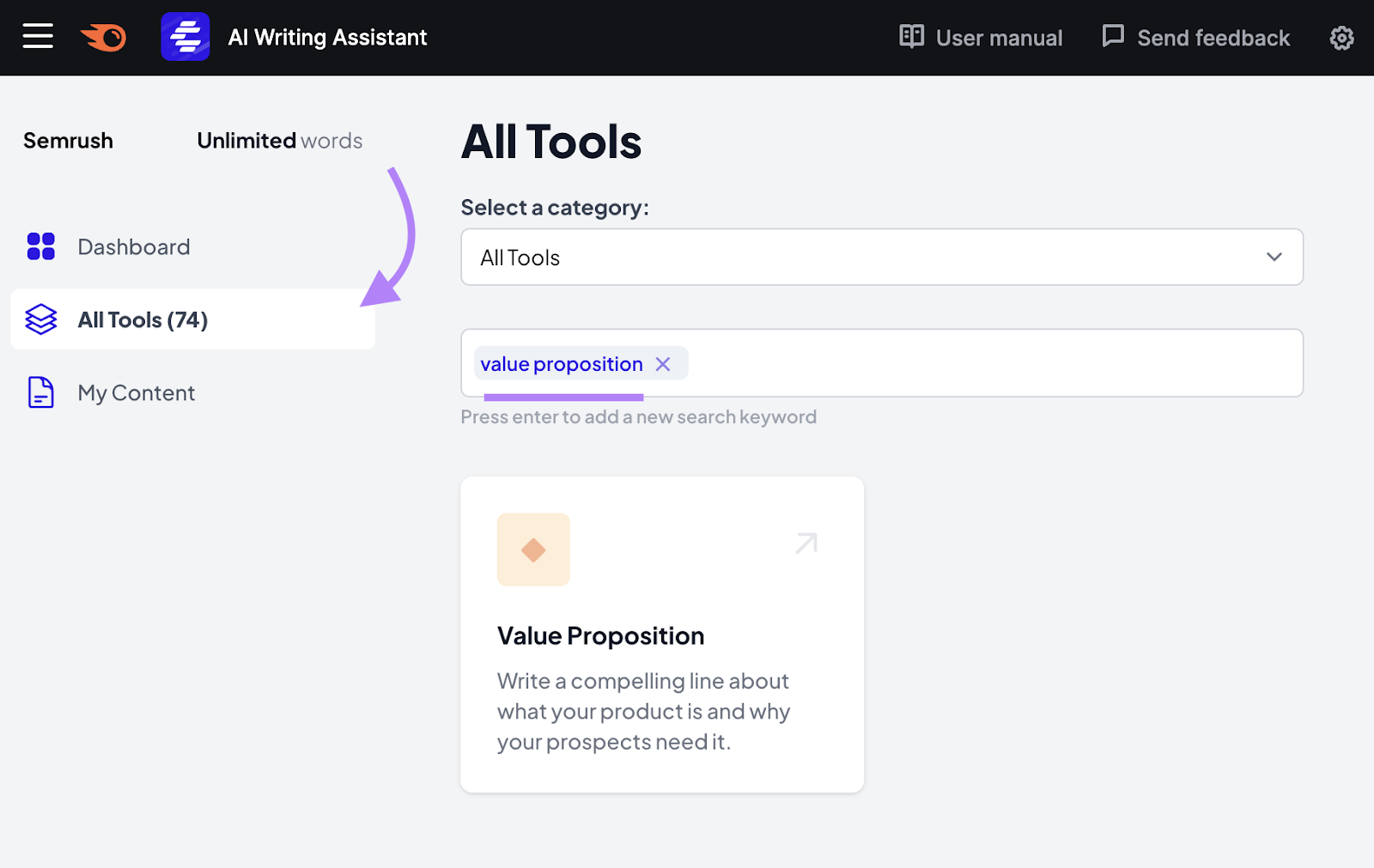
Open the tool and use the product and audience information you’ve gathered to input your preferences.
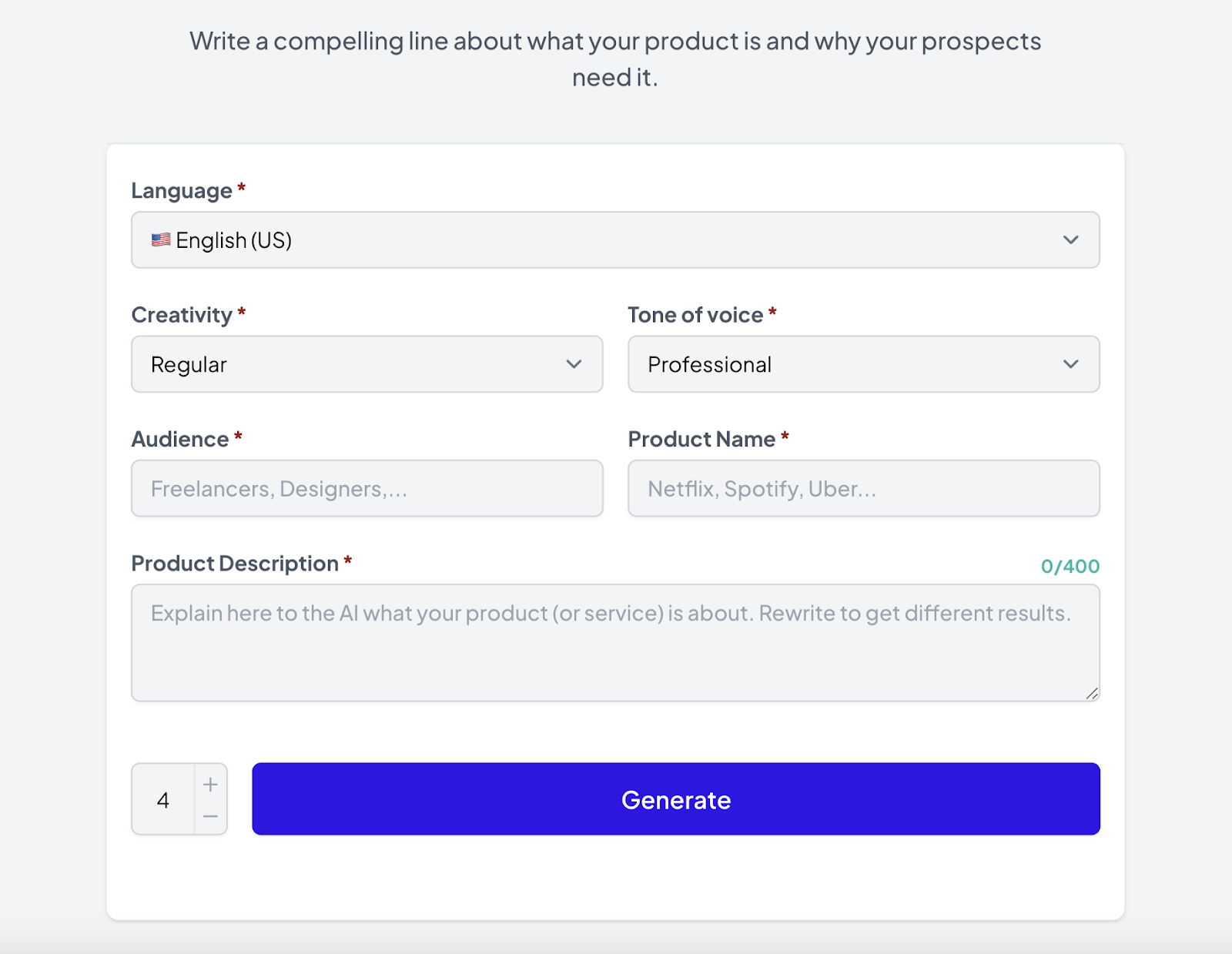
For the product description, detail matters. So the AI can deliver a customized output.
Then, click “Generate.”
Copy the results and edit them to your specifications. Or use it right out of the box.
The tool can also create social media posts, emails, ad copy, and a lot more.
5. Test Your Value Proposition
To see if your value resonates with your target audience, A/B test it.
Create two different versions and present each version to a segment of your audience.
Using channels like your:
- Homepage
- Product pages
- Email campaigns
- Paid ad copy
- Social media posts
Look at metrics like engagement, conversion rates, and feedback. To see which performs better.
Then, refine your value proposition based on these insights. Repeat the process until you find the most effective version.
6 Value Proposition Examples to Learn From
A company’s exact value proposition is often part of its internal documents and not shared with the public. But a version of it commonly appears on website homepages.
Here are some examples and what you can learn from them.
1. Netflix

Netflix successfully distills the main benefit of streaming: to watch as many movies and TV shows as you want, any time.
This value proposition also preemptively addresses customers’ concerns about getting locked into contracts by promising them flexibility. If you understand the roadblocks your customers encounter on their purchase journey, you can overcome them right from the start.
2. Dropbox
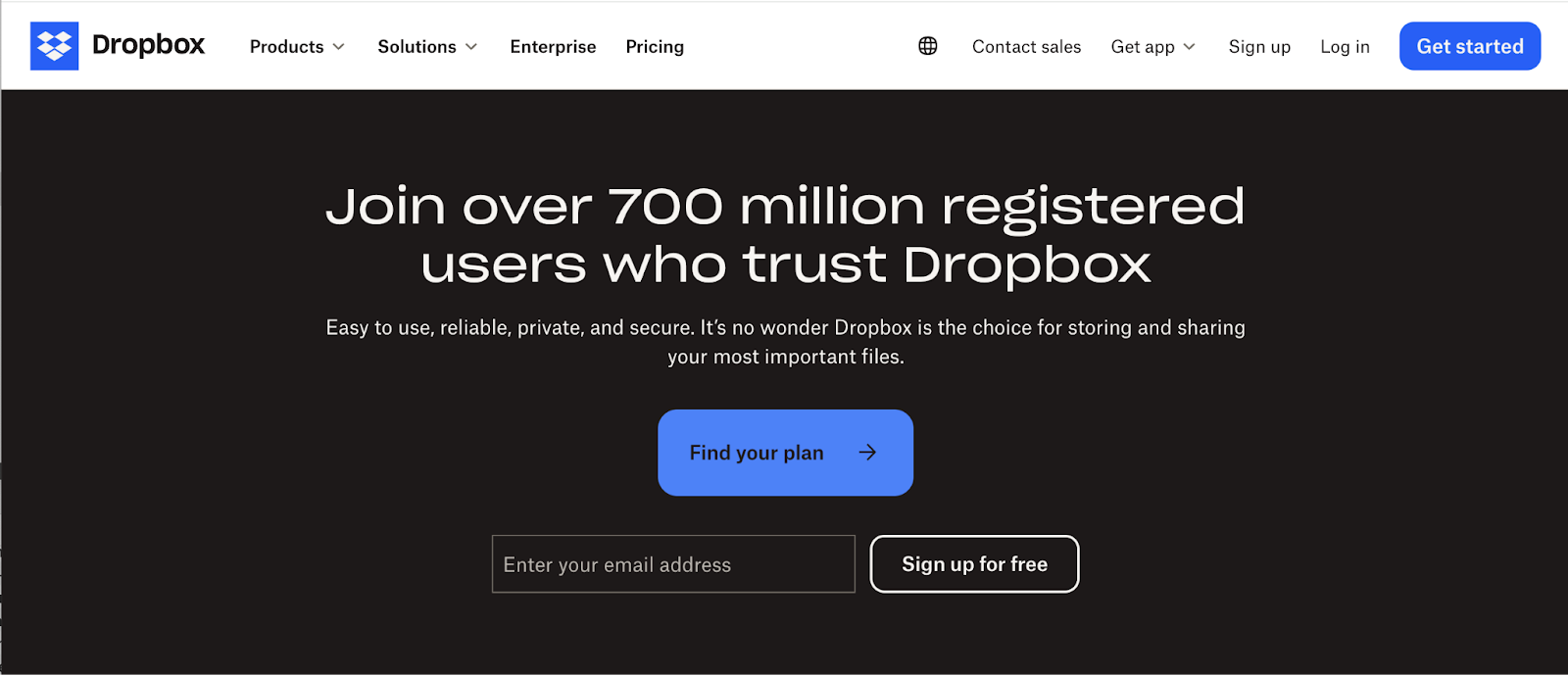
Dropbox leverages social proof in its value proposition to build trust with users. To reassure customers that it's a reliable and secure option for storing their private files.
If you have powerful stats to back up your value proposition, include them.
3. ClickUp
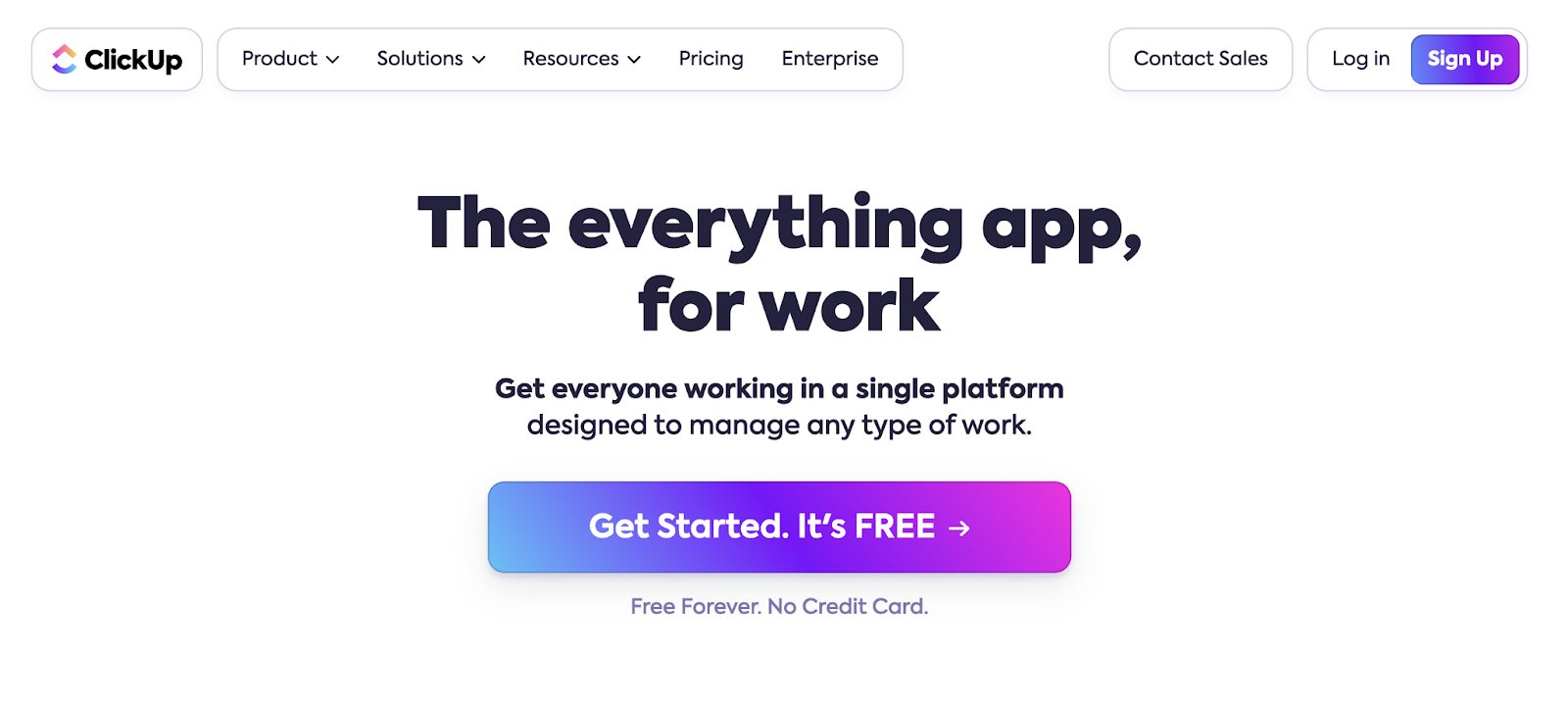
ClickUp presents itself as a unified solution to appeal to users frustrated with having different project management apps for different tasks. It also appeals to its tech-savvy audience with a pop-culture reference headline.
4. Starling Bank

Fintech company Starling Bank focuses on personalization and accolades in its value proposition. The promise of a bespoke experience sets it apart from established institutions. Awards give it credibility in an industry reliant on consumer trust.
5. Blueland
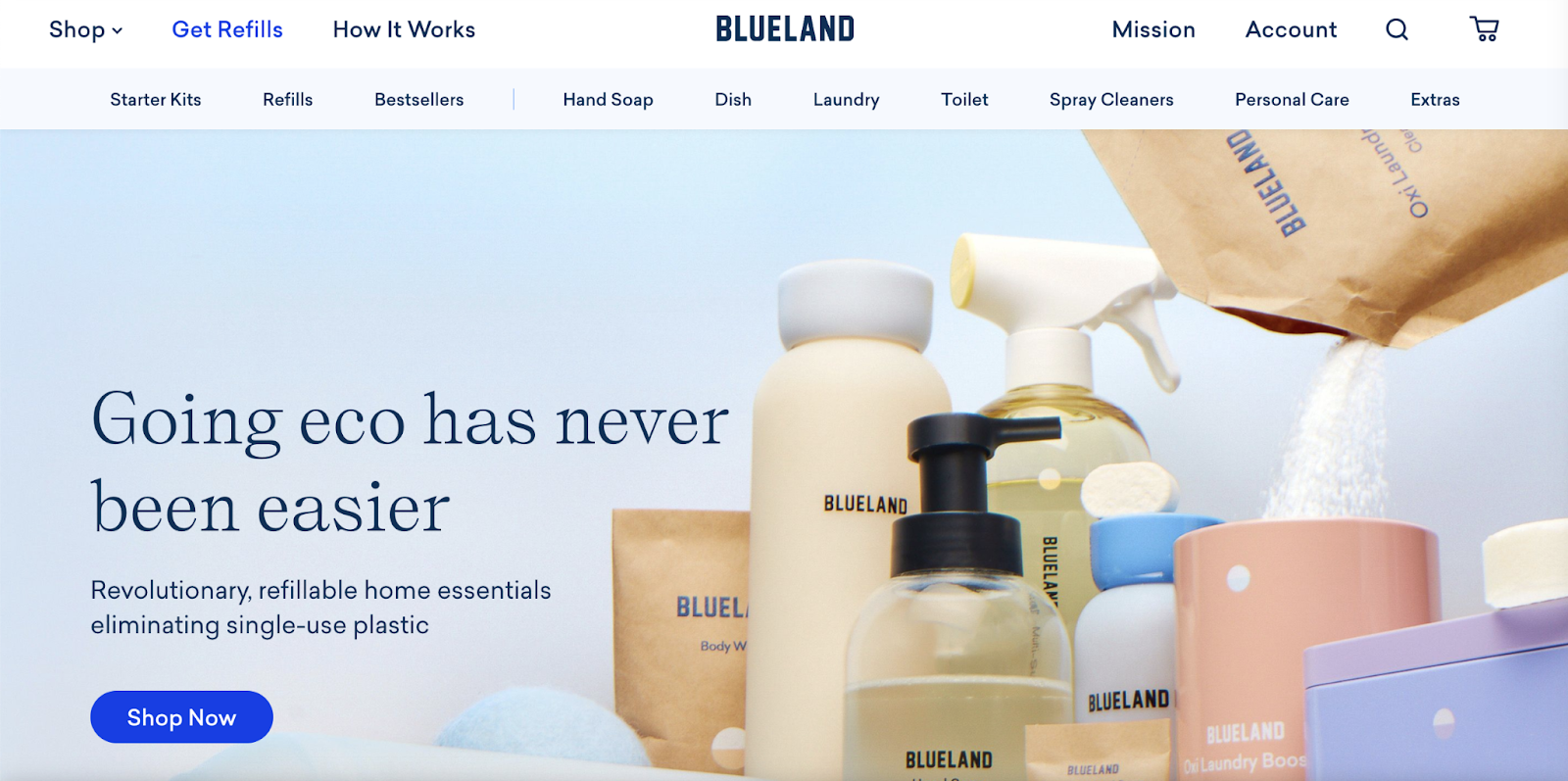
Blueland showcases how it simplifies the challenge of being more eco-friendly at home. You should avoid using hyperbole in your value proposition—but here the use of “revolutionary” fits contextually to highlight how the brand’s products are more innovative than competitors.
5. Bokksu

Snackbox subscription service Bokksu emphasizes authenticity in its value proposition, a key desired outcome by consumers looking to experience another culture through food without the added cost of travel. It also includes tangible metrics: monthly deliveries and free shipping.
Gain Access to New Strategic Insights
An effective business understands its audience’s problems and delivers a specific solution for them. Semrush tools help you understand customer needs, preferences, and emerging trends.
- One2Target: Learn about the demographics and socioeconomic status of your target customers so you know what will resonate with them
- Brand Monitoring: Track where you’re mentioned online to see what people are really saying, and what features stand out to them
- AI Writing Assistant: Write an effective value proposition directly through our dedicated app
Use them to create your value proposition statement. Or sign up for a free trial of Semrush to explore the whole range of tools and craft your entire marketing strategy.
